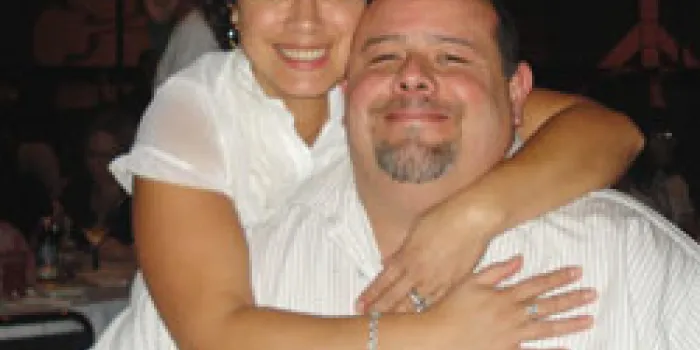I have wanted to attend the National Hemophilia Foundation’s (NHF’s) Annual Meeting for 13 years, and in 2008, I finally got my wish. Two of my five children have hemophilia: Andrew is 13 and has severe hemophilia A, and Tony Jr. is 20 and has mild hemophilia A. Last year, I applied for a first-time family travel grant for the Denver meeting. When I got the letter that said we were accepted, I was so excited. I wasn’t sure what to expect, but anticipated learning a lot.
My husband, Antonio, and Andrew, Tony Jr. and my 5-year-old daughter, Abby, came with me to the meeting. I had been to the Illinois statewide conference, but was not prepared for the sheer magnitude of this convention. It was 20 times bigger, with resources and information everywhere. I was overwhelmed in the beginning, but adjusted pretty fast. We stayed in the hotel where the conference was being held, so that made things a lot easier for us. And they had childcare for Andrew and Abby. That allowed me to go to the sessions and really focus on what was being discussed.
We got there on a Thursday afternoon and went to the first night’s exhibit opening. It was filled with home healthcare companies, pharmaceutical companies, pharmacies and so many other resources. We walked all over the place and saw the latest gizmos, products and services. We met up with our Illinois chapter representatives, home healthcare representative and our factor company. It was like old home week with familiar faces to guide us. Everyone was so nice and wanted to make sure we had everything we needed and that we were well informed of all the newest advances in hemophilia care. We met some awesome people who are passionate about making a difference in the bleeding disorders community.
On Friday morning, there was an opening session with Val Bias, CEO of NHF. He encouraged us all to work toward a cure and not to give up trying to have our voices heard on research, funding and legislation. He spoke with passion and hope for the future of all people affected by a bleeding disorder. At the beginning of the session, he showed a clip of a documentary called Bad Blood by Necessary Films. It was heartbreaking to see all the young men infected with HIV back in the early 1980s. And even more upsetting was the fact that it could have been prevented. I was overwhelmed with gratitude for the families that suffered so my sons could have a better quality of life.
Other sessions that inspired me were “Ports, Prophylaxis and Inhibitors” and “Life as a Carrier.” The boys were diagnosed 13 years ago when Andrew was an infant and Tony Jr. was 8, so we have been dealing with hemophilia in our family for a long time. I thought I was pretty knowledgeable about bleeding disorders and treatment alternatives, but there is so much more to learn. And there were things I wanted to know about, even if they did not apply to us—like ports and inhibitors. I found out that Hispanic males are more susceptible to having an inhibitor and that ports are a very short-term solution for venous access.
One thing that fascinated me is the number of women bleeders there are, and that they are so underdiagnosed. Some are symptomatic carriers, meaning they are carriers with mild forms of hemophilia themselves. The majority of women learn about their status when they give birth—and some almost hemorrhage to death. I, and so many others, always associated hemophilia with men. I was amazed to learn about the genetic aspect of bleeding disorders.
Also, I always thought von Willebrand disease was a bleeding disorder that affected mostly women. But a lot of men have it—and have both hemophilia and VWD. The products that are used to treat VWD are so different than what we use to infuse my sons. Even so, the bleeding disorders community is very close and eager to share experiences—good and bad. We, as consumers, want to make sure our loved ones get the best care possible. And we are eager to inform the public as well.
I was glad to ask questions of the experts, but it was the families and the people affected by bleeding disorders from whom I learned the most. Talking to these people made me feel like I wasn’t alone. This trip enlightened me in so many ways, and I am grateful to the NHF and to our chapter, Hemophilia Foundation of Illinois, for helping my family and me go to the meeting and connect with so many great people and resources.

